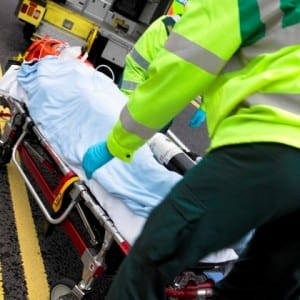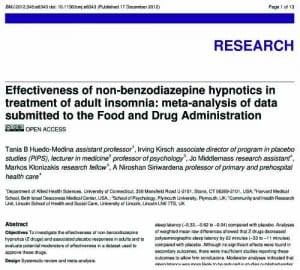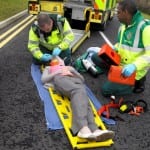Members of the Community and Health Research Unit (CaHRU) recently attended a one-day prehospital emergency care conference in Cardiff on 27 February 2013 to present studies on behalf of the study teams and being undertaken as part of the Prehospital Emergency Quality and Outcomes (PEQO) programme of research at CaHRU. The conference was sponsored by the Thematic Research Network for Unscheduled and Trauma care (TRUST), Welsh Ambulance Service Trust and the 999 EMS Research Forum.
Cardiff on 27 February 2013 to present studies on behalf of the study teams and being undertaken as part of the Prehospital Emergency Quality and Outcomes (PEQO) programme of research at CaHRU. The conference was sponsored by the Thematic Research Network for Unscheduled and Trauma care (TRUST), Welsh Ambulance Service Trust and the 999 EMS Research Forum.
Viet-Hai Phung presented posters on “Leadership, innovation and engagement in quality improvement in the Ambulance Services Cardiovascular Quality Initiative: cross sectional study” and “Prehospital outcomes for ambulance service care: systematic review”. Fiona Togher and Viet-Hai Phung presented a poster on “What do users value about the emergency ambulance service?“.
 Professor Niro Siriwardena presented one of the four oral presentations selected at the conference on the resuslts from the Ambulance Services Cardiovascular Quality Initiative (ASCQI), “The effect of a national ambulance Quality Improvement Collaborative on performance in care bundles for acute myocardial infarction and stroke”. In the afternoon he also conducted a workshop with Dr Steven Macey on “How to include anonymised routine data in emergency care research”.
Professor Niro Siriwardena presented one of the four oral presentations selected at the conference on the resuslts from the Ambulance Services Cardiovascular Quality Initiative (ASCQI), “The effect of a national ambulance Quality Improvement Collaborative on performance in care bundles for acute myocardial infarction and stroke”. In the afternoon he also conducted a workshop with Dr Steven Macey on “How to include anonymised routine data in emergency care research”.
The conference was a real success and an important opportunity for team members to meet with other leading prehospital researchers in the United Kingdom.



